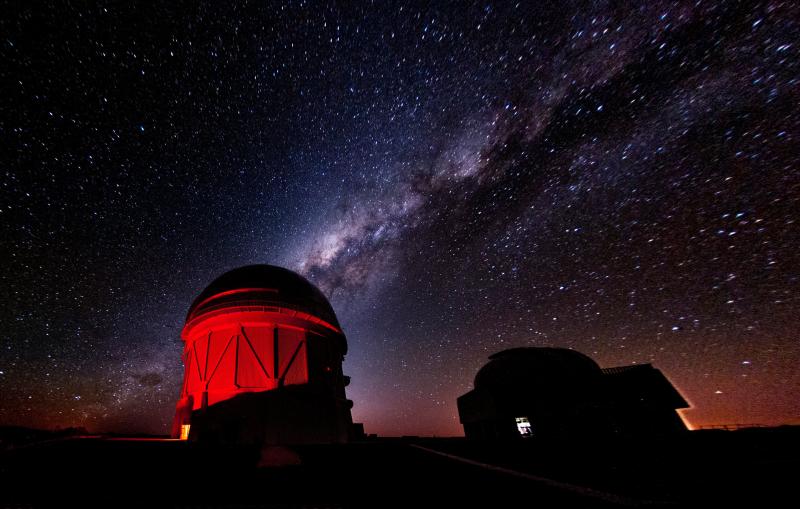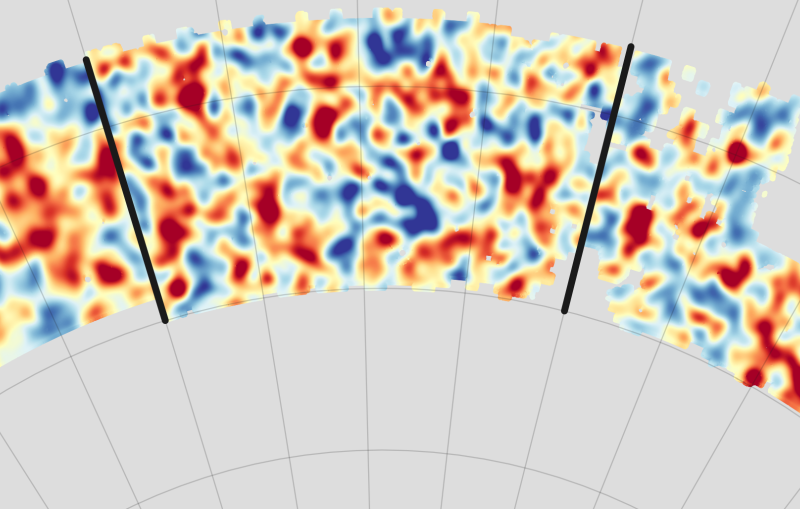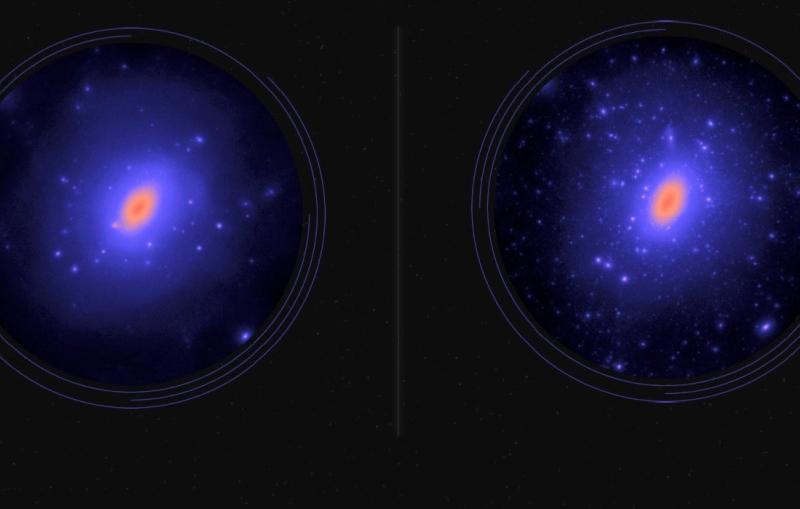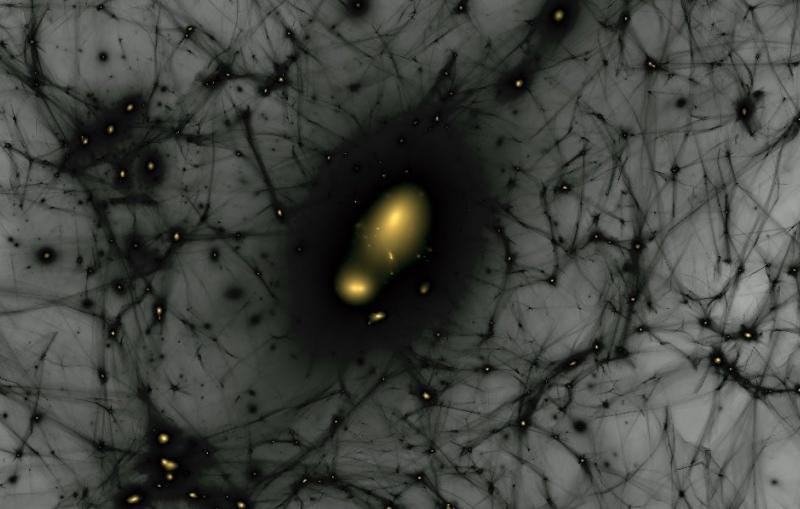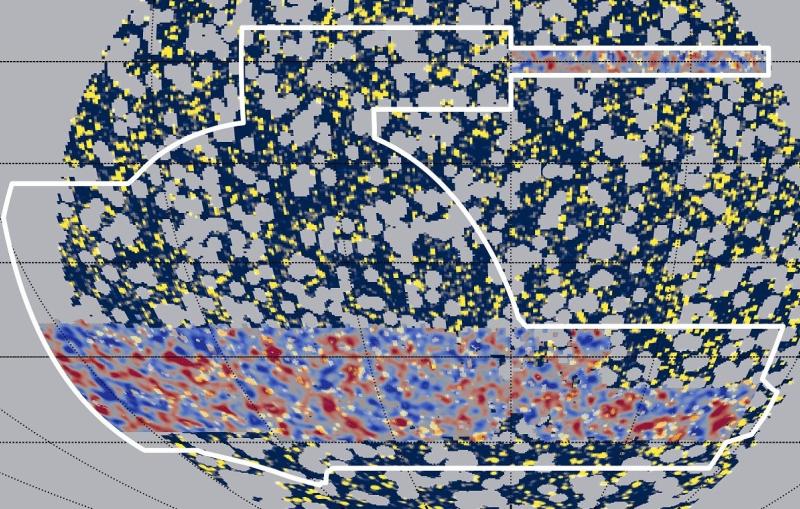Dark Energy Survey Begins
Word of the official beginning of the Dark Energy Survey (DES) starts a five-year clock on a meticulous mapping of one-eighth of the night sky by the Dark Energy Camera, mounted on the Victor M. Blanco Telescope at the Cerro Tololo Inter-American Observatory.
By Lori Ann White
Word of the official beginning of the Dark Energy Survey (DES) starts a five-year clock on a meticulous mapping of one-eighth of the night sky by the Dark Energy Camera, mounted on the Victor M. Blanco Telescope at the Cerro Tololo Inter-American Observatory. Scientists will use the camera to peer back seven billion years to when the universe was half its current age and gather precise data about an estimated 300 million galaxies, 100,000 galaxy clusters and 4,000 new supernovae. They’ll use that information to learn more about dark energy, thought to be the reason why the universe is expanding faster and faster.
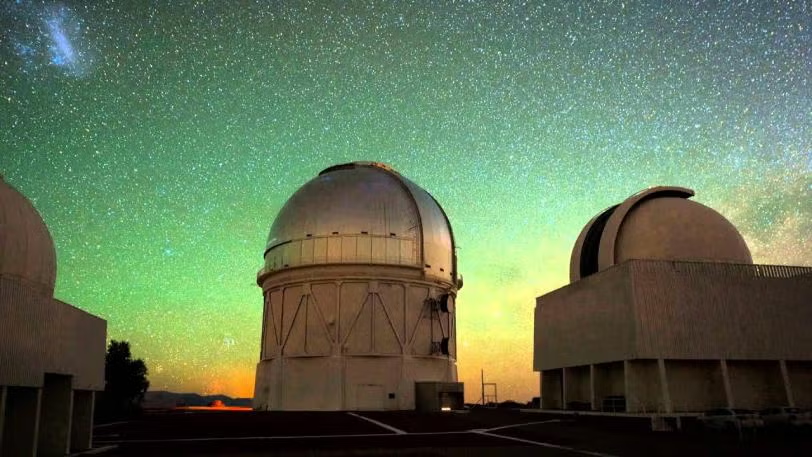
Dark Energy Survey
But the start of the survey doesn’t mean the start of the project. The clock started years ago for four members of the Kavli Institute for Particle Astrophysics and Cosmology (KIPAC), a joint SLAC-Stanford institute. Risa Wechsler, an associate professor at KIPAC, said she’s been working on DES since the first proposal, 10 years ago. Her task?
"What I’m trying to do," she said, "is simulate the whole universe."
As Wechsler explains, it goes back to how well we understand those 300 million galaxies, 100,000 galaxy clusters and 4,000 supernovae and how they formed. "The goal of DES as a survey is to use the properties of these objects to measure the properties of dark energy," she said. But to do that, "we need to be able to make predictions." In their case, the predictions are cosmic simulations.
Wechsler and her colleagues and students combine known physical laws like gravity with current ideas about the structure and content of the universe – such as inflation and dark matter – into computer code. Then they set the simulation’s clock back to the beginning of the universe and press start. If the results of the simulations match the telescope's observations of the real cosmos, the cosmologists can have some confidence in their theories. And right now, Wechsler says, "The simulation looks amazingly good."
Simulations have been around for a while; what’s different here, said Wechsler, is the scale. "One-eighth of the sky, half-way back to the Big Bang," she said. "Simulations have never been done on this scale before." Wechsler's are used by all the DES science groups.
Two people working directly with Wechsler’s simulations are KIPAC postdoctoral researchers Eduardo Rozo (also a Panofsky Fellow) and Eli Rykoff, long-time collaborators who have been working on DES for more years than DES will take data. They are currently examining the galaxy clusters created by the simulations, in preparation for analyzing the clusters DES discovers.
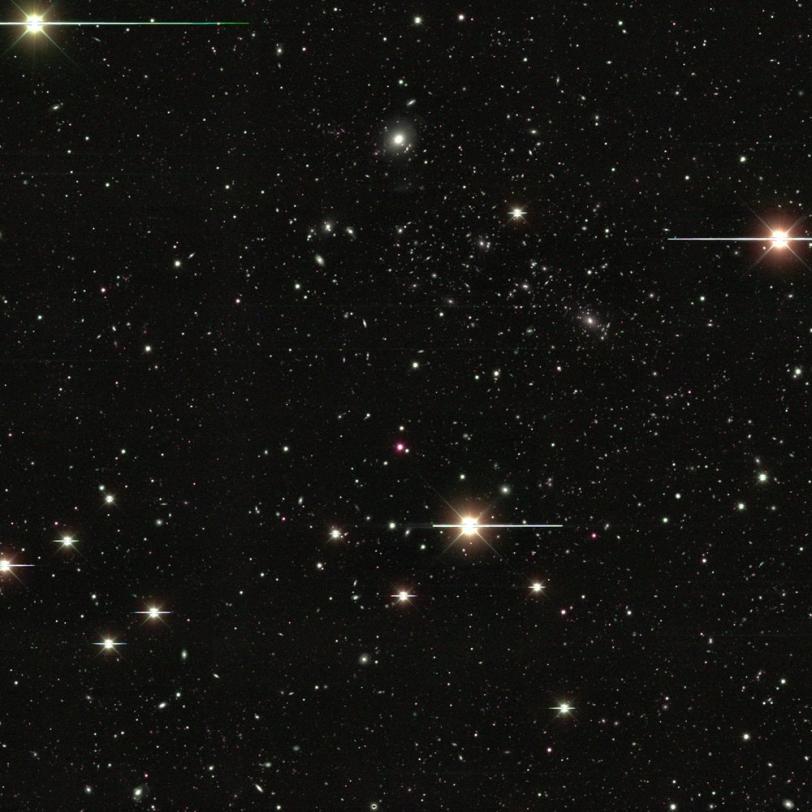
"Galaxy clusters are the largest gravitationally bound structures in the universe," said Rykoff, making them prime candidates for demonstrating the battle between gravity and dark energy.
"To form, galaxy clusters must work against the expansion of the universe," added Rozo. "With the survey we can count and weigh them, determine how big they are and infer the effect of expansion." Since accounting for dark matter – which can currently be detected only through its gravitational effects – is an important part of “weighing” the clusters, he added that refining the behavior of the dark matter in Wechsler’s simulations is especially important. He and Rykoff have also been providing feedback to Wechsler to help her tune the computer code that drives the simulations.
A fourth KIPAC scientist, Kavli Fellow Carlos Cunha, also relies on simulations for his task. In addition to helping determine the best survey strategy for DES, he is preparing to transform the two-dimensional view the Dark Energy Camera provides into a three-dimensional map. Four-dimensional, really, when taking into account the varying lengths of time light from these galaxies has taken to reach us.
"In looking at these 300 million galaxies, you’re actually seeing all the history of the universe at the same time," Cunha explained. "I convert this 2-D picture into a 3-D map. I do it by time – by redshift."
As space itself expands, it stretches the wavelengths of the light traveling through it. In the case of visible light, this stretching makes them look redder – hence the name. Redshift is a way to measure this process, since the longer a wavelength of light travels through space, the more it’s stretched and the redder it gets.
But determining redshifts for DES galaxies promises to be extremely challenging. Normally redshift is determined by examining the spectrum of light from a galaxy, but the amount of light that the Dark Energy Camera will gather from these hundreds of millions of individual galaxies, some billions of light-years away, simply will not be enough to determine their spectra. "The night sky itself can be 100 times brighter than what we’re looking at," Cunha said.
Instead, Cunha said, DES will rely on photometric redshift – a method of estimating how far the light from a galaxy has been redshifted based on the galaxy’s color. His task is to make the DES photometric redshifts as accurate as possible. "I absolutely use the simulations," he said, as well as creating test cases from existing data.
The simulations are vital to the success of the survey, but all four researchers are eager for the real data DES will gather by looking out – and back – seven billion years. "Seven billion years ago is an interesting time," said Wechsler, “because that’s about when we expect the push of dark energy to take over from the pull of dark matter."
In the meantime, Wechsler and her colleagues continue to check their theories against the simulations. "The advantage of simulations is that you actually know what the right answer is," Wechsler said.
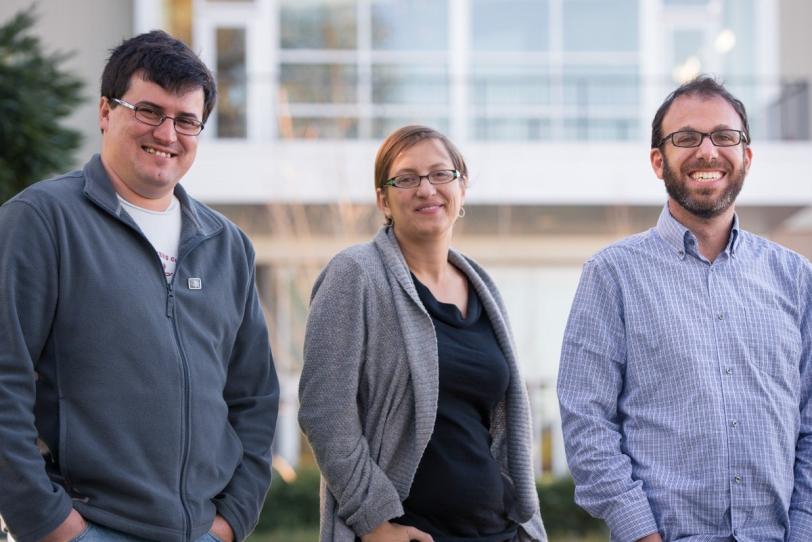
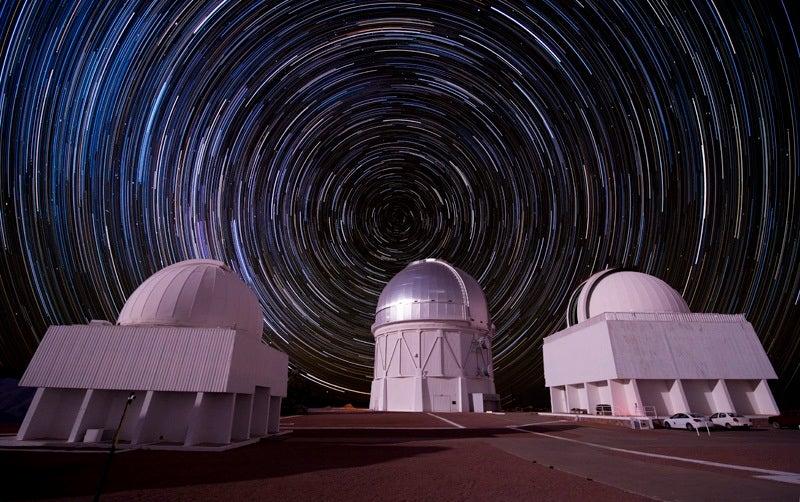
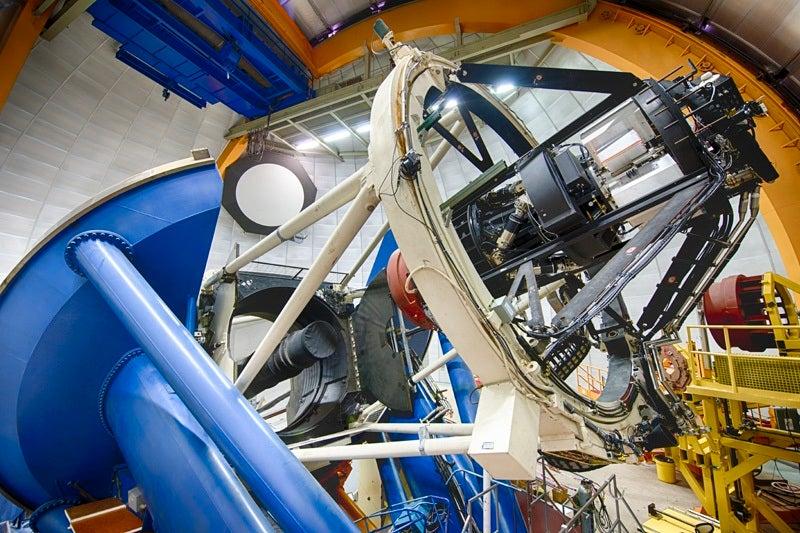
SLAC is a vibrant multiprogram laboratory that explores how the universe works at the biggest, smallest and fastest scales and invents powerful tools used by scientists around the globe. With research spanning particle physics, astrophysics and cosmology, materials, chemistry, bio- and energy sciences and scientific computing, we help solve real-world problems and advance the interests of the nation.
SLAC is operated by Stanford University for the U.S. Department of Energy’s Office of Science. The Office of Science is the single largest supporter of basic research in the physical sciences in the United States and is working to address some of the most pressing challenges of our time.

